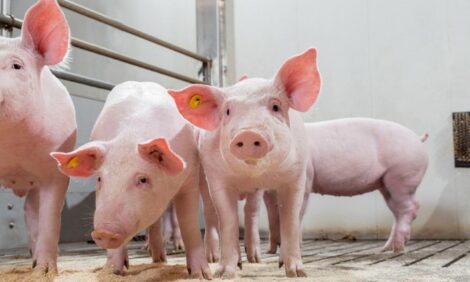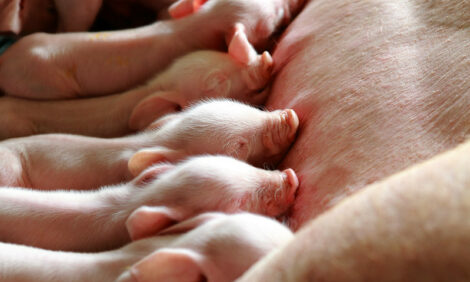



Tips to prevent edema in piglets
Edema in piglets – could management be the answer?Part of Series:
< Previous Article in Series
The global pig industry continues its ongoing struggle with edema in piglets – could management be the answer? Peter Smid, global program manager for feed additives at Trouw Nutrition, explains why it’s a problem and offers tips to help producers prevent edema on-farm.
“As an industry we struggle with edema simply because we don't meet the needs of the piglets,” said Smid. “If you look at edema, it's a fast microbial overgrowth of E. coli in the hind gut of the piglets. E. coli are producing toxins which are ultimately killing the piglet in the worst-case scenario.”
What’s causing edema?
Smid says there are several reasons for the microbial overgrowth of E. coli. First, from the moment we wean piglets, they’re experiencing significant stress. Expecting the piglets to perform and grow when their needs are not being met is unrealistic.
“The piglet was used to sow's milk, a warm liquid feed, and all of a sudden the piglet is supposed to eat a dry feed, which it's not used to, either in a pellet form or mash form, but it's a completely different feed form than what the piglet is used to,” explained Smid. “Plus, from a nutritional basis, with sow's milk the vast majority of the energy is coming from emulsified fats with particles that are so small they can be absorbed straight away and digested by the piglets.”
After weaning, the piglet is expected to get its energy from starch, which it's completely not used to and does not have adequate enzyme production to fully digest it – shifting from milk protein to vegetable protein is challenging for piglets.
“It's a time of huge changes for piglets, and on top of all that, we're taking it away from its mother, bringing it into a completely new environment with a lot of new piglets that it doesn’t know, and we expect it to eat and grow,” he noted. “However, the piglet's mindset will be different. First it will want to fight for dominance as the pigs establish a new hierarchy.”
A key consequence of stress is that piglets will not eat. When very stressed, they might be off feed for two days or even longer before starting to eat again. During that time, the pH in the stomach has gone up, and by the time the piglet eats it’s very hungry. It will likely over-consume and be lacking the acid to help digestion, as well as lacking the necessary enzymes, which will cause the feed to be poorly digested. The feed then moves to the hind gut which then serves as a great substrate for E. coli to grow on. After a few days E. coli typically forms, and edema occurs five to seven days post-weaning, Smid explained.
“If I were to describe the profile of an edema victim, they are only living on sow's milk, fighting for dominance at weaning, not knowing what to do with the dry feed and not eating for two days or more,” he noted. “Then being so hungry and finally figuring out dry feed, they overeat, and those are the piglets who fall victim to edema.”
Tips to prevent edema in piglets
1. Acidifying the piglet’s stomach – producers often acidify the feed, but that can only help so much. Luckily, a piglet is drinking two and a half times more than it's eating, so applying a proper buffered organic acid blend to the drinking water will help the piglet keep the pH in the stomach low to optimize digestion.
2. Transition feed - prepare a warm porridge of the weaner feed, which you can simply pour into an open bowl with a watering can 3X per day in the lactation houses for piglets. This helps them get accustomed to the creep feed in a form similar to sow's milk. Start feeding the porridge as early as possible by starting with very small amounts as it easily becomes unhygienic and continue feeding the porridge through the first week after weaning. A similar semi-liquid feed form can help reduce the pig’s stress level making the transition to dry feed less stressful. It's more work for the farmer, but it does pay off in better uniformity of piglets.
3. Piglet interaction – in the second half of lactation, take away the partitions between the sows or make a path, so the piglets can interact when they're still with the sow. After weaning, those piglets that already know each other won’t fight for dominance because they're used to each other. This greatly relieves the stress on the piglets, so they are more focused on eating straight after weaning.
4. Leave the lights on – during the first 48 hours after weaning, leave the lights on. Research shows that the moment you turn off the lights, they lay down and go to sleep, but it also means there’s no feed intake. Thus, it prolongs the period between weaning and the piglet’s first crucial meal.
“What we want to achieve is a continuous intake of nutrients, but if there's a long period of no nutrient intake, that will disturb the gut and increase the risk of edema occurring,” he said.
You might also be interested in these articles:
Essential role of the sow: production of milk
Accelerating gut maturity with dietary fibre
Precision sow nutrition for optimal piglet performance










